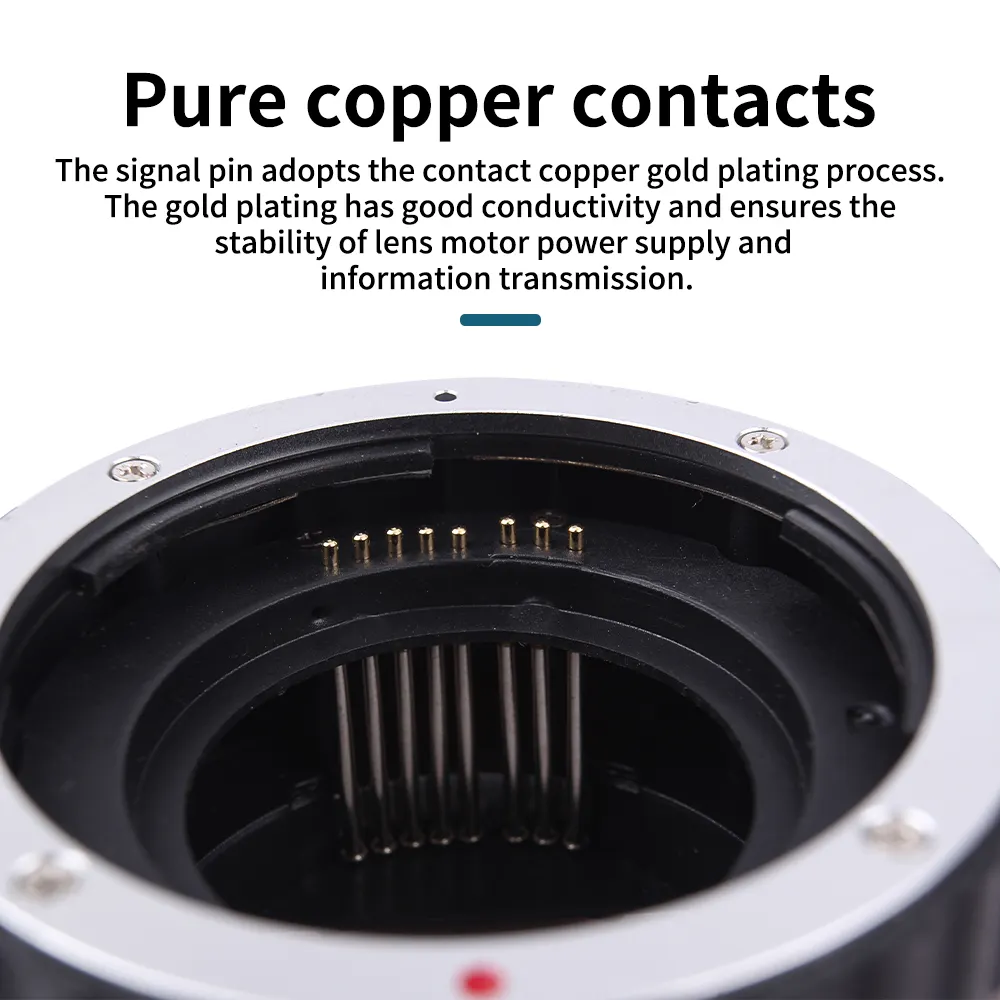

Time:2025-04-17 Views:1

Macro lens adapters are crucial accessories in the field of photography, especially for those who engage in close - up and detailed shooting. When it comes to their solvent resistance, this property significantly impacts their durability and usability in various shooting environments.
Materials and Solvent Interaction
Macro lens adapters are typically made from a combination of materials, including plastics, metals, and rubber - like substances for gaskets and seals. Plastics used in the construction of these adapters, such as polycarbonate or acrylonitrile - butadiene - styrene (ABS), have different levels of resistance to solvents. Polycarbonate, for instance, is known for its relatively good chemical resistance. It can withstand exposure to many common solvents like alcohols, which are often used for cleaning camera equipment. However, it may be sensitive to more aggressive solvents such as certain types of ketones or aromatic hydrocarbons. ABS plastics, on the other hand, might be more vulnerable to a wider range of solvents. Solvents can potentially cause swelling, softening, or even cracking of the plastic parts of the macro lens adapter. This can lead to a loss of structural integrity and affect the proper alignment of the adapter with the lens and camera body.
Effect on Functionality
The solvent resistance of macro lens adapters directly relates to their functionality. If the adapter is exposed to solvents that it cannot withstand, the physical changes in its materials can disrupt the connection between the lens and the camera. For example, if the plastic parts of the adapter swell due to solvent exposure, it may no longer fit snugly onto the lens or camera mount. This misalignment can cause issues such as incorrect focusing, light leaks, or even prevent the lens from being attached or detached properly. In addition, if the solvent affects the rubber gaskets or seals in the adapter, which are often used to provide a tight fit and prevent dust and moisture ingress, it can compromise the adapter's ability to protect the camera and lens from the elements. This is particularly important in macro photography, where the equipment is often used in close - up, detail - oriented work, and any external interference can ruin the shot.
Testing and Recommendations
Manufacturers often conduct extensive testing on macro lens adapters to determine their solvent resistance. These tests involve exposing the adapters to a variety of solvents under controlled conditions and observing any changes in their physical properties. Based on these tests, they can provide recommendations to users regarding the types of cleaning agents and substances that the adapter can safely come into contact with. For photographers, it is essential to follow these guidelines. Using inappropriate solvents to clean the adapter or exposing it to solvents in the shooting environment, such as in industrial or chemical - rich areas, can significantly reduce the lifespan and performance of the macro lens adapter. By being aware of the adapter's solvent resistance and taking proper precautions, photographers can ensure that their equipment remains in optimal condition for high - quality macro photography.
Read recommendations:
Camera Side Handle with Locating Mount